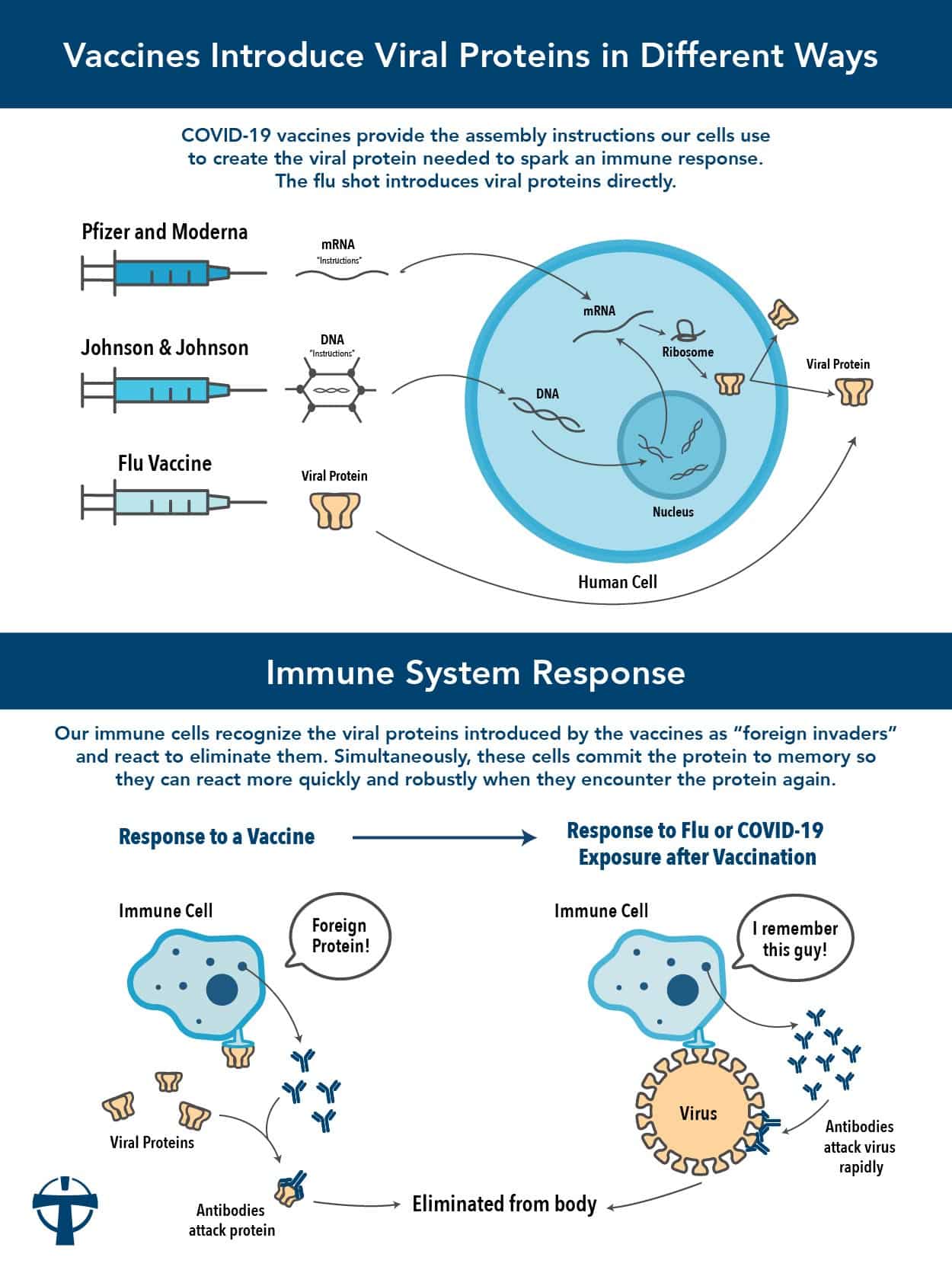Last year’s flu season was a bust, in the best way. Positive flu tests were rare, only 0.2%. In a typical year, around 30% of tests are positive. In fall 2020, COVID-19 was still top-of-mind for most of us, and we were all masking up and remaining socially distanced.
This flu season may be different, as COVID-19 restrictions have eased, and people are interacting more closely and more frequently again. Although a “twindemic,” in which flu and COVID-19 are simultaneously circulating unchecked is possible, we have vaccines that can protect us from both infections.
The flu and COVID-19 are both contagious respiratory diseases with similar symptoms. The vaccines use distinctly different technologies against two unique viruses, but they have the same job of teaching our immune systems to recognize and attack a virus so that we don’t get sick or reduce the severity of disease.
Dr. Katie Taylor, medical director of infection prevention at Our Lady of the Lake Regional Medical Center and assistant professor of clinical medicine at LSU, helps us understand the science behind the flu and COVID-19 vaccines. The end game for both is to introduce a viral protein to your immune system so it can recognize the virus if you’re exposed later.

How do flu vaccines work?
Flu shots introduce a small viral protein from an inactivated virus or a synthetically made recumbent virus. The protein causes antibodies to develop about two weeks later, which provide protection against infection when you encounter circulating flu virus. Vaccination also reduces the severity of illness in people who still get the flu. The flu shot cannot give you the flu because it does not contain all the viral machinery of the flu.
Seasonal flu vaccines are designed to protect against flu viruses research indicates will be most common. This year all flu vaccines protect against four different strains of influenza, two A and two B types. A high-dose option and an adjuvant option are available for people 65 and older whose immune systems may not respond as well to regular shots.
Flu shots are recommended and available for everyone older than six months. Babies are protected by the people around them getting vaccinated.
How do the COVID-19 vaccines work?
Just like with the flu vaccine, the COVID-19 vaccines help our bodies develop immunity to the virus by activating antibodies. The different types of COVID-19 vaccines work in different ways to offer this protection, but all leave the body to remember how to fight the virus in the future.
The Pfizer and Moderna vaccines use mRNA to give your body a set of instructions on how to build the viral protein. Once your body builds that little bit, it starts an immune reaction. The mRNA instructions don’t stick around, and nothing about your body is changed.
Johnson & Johnson is a vector vaccine, which contains a modified version of a different virus and inside its shell is genetic material from the virus that causes COVID-19. This viral vector gives your cells instructions to make the viral protein, and your cells copy that, prompting your body to remember how to fight the virus if infected in the future.
Learn more about the science behind the COVID-19 vaccines on the CDC website.
Two Shots at One Time?
Want to save time and get your flu shot and COVID-19 vaccine or booster at the same time? We have answers to FAQs about this topic, and it is safe to get both the flu shot and a COVID-19 vaccine at the same visit.
Getting vaccinated against COVID-19 is a personal choice, but it is a safe choice.




